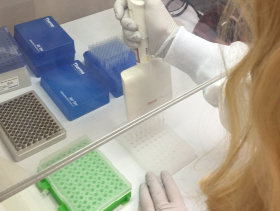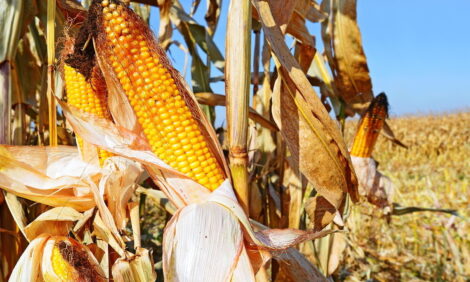



The importance of sensitivity and specificity in diagnosing bovine mastitis
Have you ever received a “no growth” result in a bacterial culture when trying to diagnose mastitis?About 40–50% of clinically abnormal milk samples tested with traditional culture will come back with a “no growth” result, leaving dairy farmers right where they started—with a mastitic cow and no diagnosis for accurate treatment.
A diagnostic test with high sensitivity and specificity is the key to solving this problem. Sensitivity and specificity are measures of a diagnostic test's ability to correctly classify an animal as having a disease or not having a disease. Sensitivity describes the ability to designate an animal with disease as positive; if it’s highly sensitive, it means the diagnostic test has few false-negative results, so fewer positive cases are missed. Specificity refers to the ability to identify an animal that does not have a disease as negative; if a test has high specificity, there are fewer false-positive results. It’s ideal to use a test that has both high sensitivity and high specificity.
Pathogens that are difficult to culture
Some economically damaging mastitis pathogens like Mycoplasma bovis (M. bovis) are more difficult to identify than other pathogens. M. bovis is not an easy pathogen to culture because it’s a highly delicate pathogen that can take up to 10 days to incubate. Unfortunately, many laboratories don’t have the capability to transport, handle, isolate, and culture M. bovis, given its fragile nature.
With culture, it’s necessary to use a specialized transfer medium for Mycoplasma and transport the M. bovis sample to the lab quickly; otherwise, growth may be compromised. Plus, experts say lab staff must know exactly what they are looking for when it comes to M. bovis. Diagnosis by culture is a rather subjective process, which can further lead to inaccurate diagnoses. For all these reasons, it’s very difficult to get an accurate result for M. bovis using a standard culture technique.
Farmers often think of a “no growth” result as a failed sample. However, a “no growth” result simply means the culture grown didn’t identify the pathogen. The clinical or subclinical mastitis could be caused by a variety of issues, including:
- A gram-negative pathogen
- An intermittent Staphylococcus aureus shedder
- A Mycoplasma that is too delicate so it didn’t survive the transport to the laboratory
With culture, it’s common for a few pathogens to grow large colonies that dominate the dish, prohibiting the growth of other pathogens. Unfortunately, fast-growing pathogens aren’t necessarily the most important or the only pathogens to target. Knowing and understanding the full pathogen load is critical to solving a farmer’s mastitis infection rate in the herd.
The real downside to a “no growth” result is that it costs farmers time and money—time because additional testing will be required to get a conclusive result, and money because during the culture growth time, M. bovis and other mastitis-causing pathogens may spread to other cows, causing a negative economic impact to a farmer’s bottom line. Also, antibiotics administered to cows with mastitis could result in a “no growth” result, and the farmer is left unsure whether the cow had mastitis or the antibiotic cleared the pathogen. It’s critical to know what pathogen you are dealing with to help make the best mastitis treatment or management decision.
PCR offers sensitive and specific results
 Real-time PCR delivers highly accurate results with low levels of false-positive or false-negative results. PCR doesn’t require a viable organism; only DNA is needed to get a reliable result. Real-time PCR diagnostic tests provide mastitis results in 2.5–3 hours and can be relayed to the farmer the same day, while culture results can take up to 10 days. The quick and accurate results of PCR can help to mitigate spread of disease and potential economic loss, especially when testing for highly contagious mastitis pathogens that may require culling the herd.
Real-time PCR delivers highly accurate results with low levels of false-positive or false-negative results. PCR doesn’t require a viable organism; only DNA is needed to get a reliable result. Real-time PCR diagnostic tests provide mastitis results in 2.5–3 hours and can be relayed to the farmer the same day, while culture results can take up to 10 days. The quick and accurate results of PCR can help to mitigate spread of disease and potential economic loss, especially when testing for highly contagious mastitis pathogens that may require culling the herd.
PCR can identify DNA from viable, dead, or growth-inhibited pathogens. Results from a PCR test can provide detection of multiple mastitis-causing pathogens and offer more information to farmers and veterinarians to be able to monitor, track, and identify pathogen load over time in a herd using historical data.
One of the biggest risk factors of M. bovis transmission is the introduction of new cows to the herd. With the ability to detect infections before clinical signs have developed, PCR can offer buyers the opportunity to screen new additions to the herd and increase their biosecurity by keeping disease off the farm and out of the herd. It also helps to identify and remove those animals with persistent, subclinical infections, which continue to infect other cows in the herd.
 PCR can be used with individual cow samples or bulk milk samples, which can be fresh, frozen, or preserved. Plus, PCR offers the flexibility to store samples in refrigerators or even in freezers. In contrast, culture samples must be recent and fresh and are more susceptible to mishandling.
PCR can be used with individual cow samples or bulk milk samples, which can be fresh, frozen, or preserved. Plus, PCR offers the flexibility to store samples in refrigerators or even in freezers. In contrast, culture samples must be recent and fresh and are more susceptible to mishandling.
Overall, PCR allows for a faster diagnosis, which allows the veterinarian and farmer to quickly develop an action plan.
Find out more at thermofisher.com/mastitis
For Veterinary Use Only. For In Vitro Use Only. Regulatory requirements vary by country; products may not be available in your geographic area.



